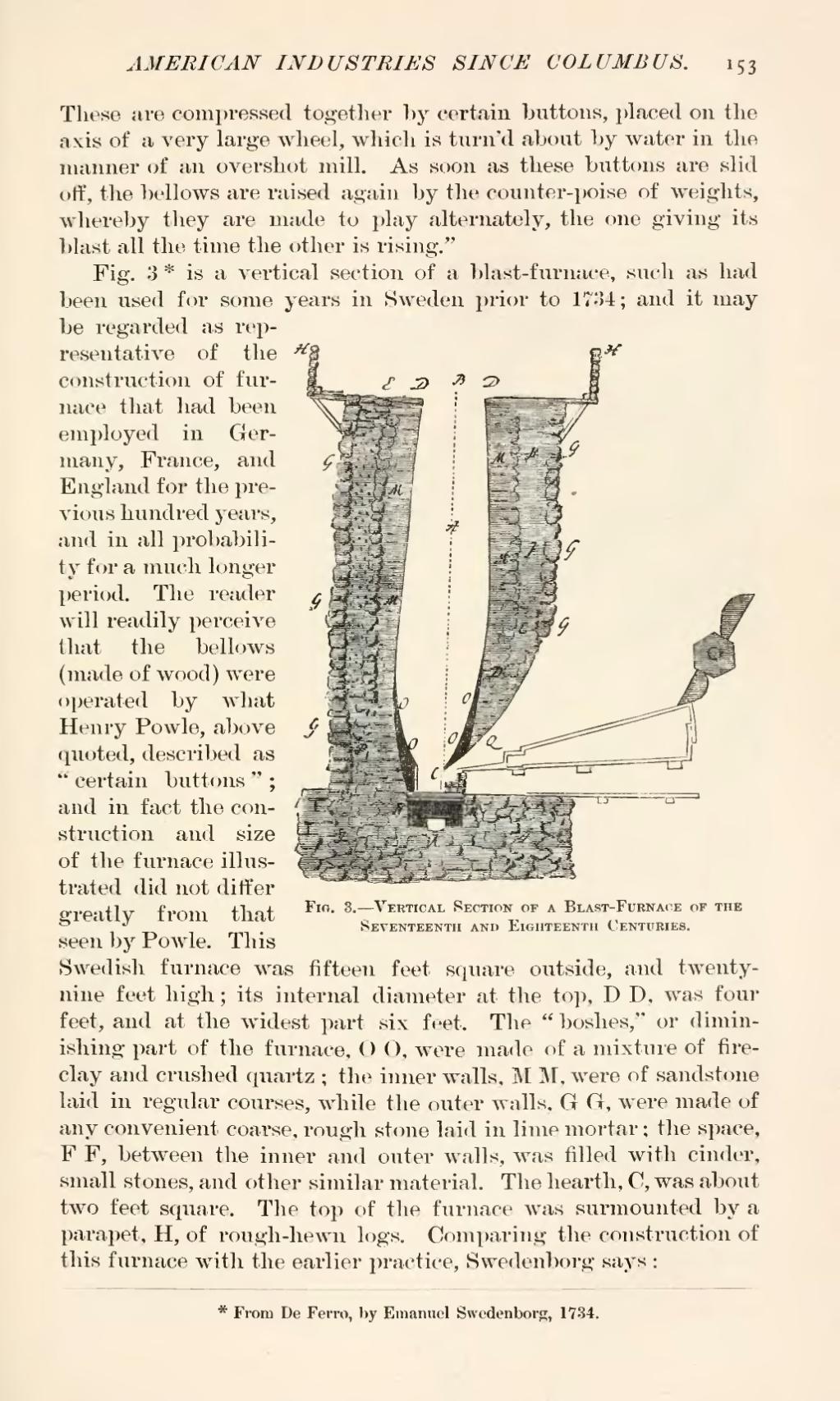These are compressed together by certain buttons, placed on the axis of a very large wheel, which is turn'd about by water in the manner of an overshot mill. As soon as these buttons are slid off, the bellows are raised again by the counter-poise of weights, whereby they are made to play alternately, the one giving its blast all the time the other is rising."
Fig. 3[1] is a vertical section of a blast-furnace, such as had been used for some years in Sweden prior to 1734; and it may  Fig. 3.—Vertical Section of a Blast-Furnace of the Seventeenth and Eighteenth Centuries. be regarded as representative of the construction of furnace that had been employed in Germany, France, and England for the previous hundred years, and in all probability for a much longer period. The reader will readily perceive that the bellows (made of wood) were operated by what Henry Powle, above quoted, described as "certain buttons"; and in fact the construction and size of the furnace illustrated did not differ greatly from that seen by Powle. This Swedish furnace was fifteen feet square outside, and twenty-nine feet high; its internal diameter at the top, D D, was four feet, and at the widest part six feet. The "boshes," or diminishing part of the furnace, O O, were made of a mixture of fire-clay and crushed quartz; the inner walls, M M, were of sandstone laid in regular courses, while the outer walls, G G, were made of any convenient coarse, rough stone laid in lime mortar; the space, F F, between the inner and outer walls, was filled with cinder, small stones, and other similar material. The hearth, C, was about two feet square. The top of the furnace was surmounted by a parapet, H, of rough-hewn logs. Comparing the construction of this furnace with the earlier practice, Swedenborg says:
Fig. 3.—Vertical Section of a Blast-Furnace of the Seventeenth and Eighteenth Centuries. be regarded as representative of the construction of furnace that had been employed in Germany, France, and England for the previous hundred years, and in all probability for a much longer period. The reader will readily perceive that the bellows (made of wood) were operated by what Henry Powle, above quoted, described as "certain buttons"; and in fact the construction and size of the furnace illustrated did not differ greatly from that seen by Powle. This Swedish furnace was fifteen feet square outside, and twenty-nine feet high; its internal diameter at the top, D D, was four feet, and at the widest part six feet. The "boshes," or diminishing part of the furnace, O O, were made of a mixture of fire-clay and crushed quartz; the inner walls, M M, were of sandstone laid in regular courses, while the outer walls, G G, were made of any convenient coarse, rough stone laid in lime mortar; the space, F F, between the inner and outer walls, was filled with cinder, small stones, and other similar material. The hearth, C, was about two feet square. The top of the furnace was surmounted by a parapet, H, of rough-hewn logs. Comparing the construction of this furnace with the earlier practice, Swedenborg says:
- ↑ From De Ferro, by Emanuel Swedenborg, 1734.
